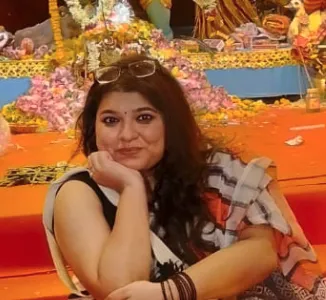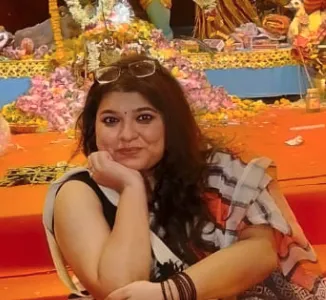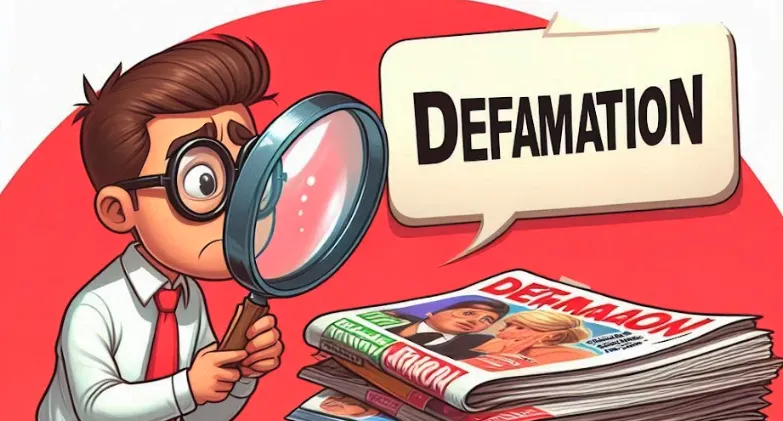Who is Termed as a Minority and What Are Minority Rights in India?
In India, a "minority" is defined as a group of people who differ in religion, language, or culture from the majority of the population. The term typically refers to those who are smaller in number and often face challenges in preserving their distinct identities and interests.
advertisement
Importance of Protecting Minority Rights
Protecting minority rights is crucial for ensuring equality, justice, and social harmony. It helps prevent discrimination and ensures that all groups have equal opportunities to participate in the socioeconomic and cultural life of the country. By safeguarding minority rights, societies can promote inclusivity and respect for diversity.
Constitutional Provisions
The Indian Constitution provides several provisions to protect the rights of minorities, aiming to ensure their security and promote their welfare. These provisions are designed to uphold the principles of justice and equality for all citizens.
Types of Minorities in India
Religious Minorities
Religious minorities in India include various communities that practise religions other than Hinduism. Notable religious minorities are:
- Muslims: Representing a significant portion of India's population, Muslims have their own places of worship, educational institutions, and cultural practices.
- Christians: With various groups including Catholics, Protestants, and Orthodox, Christians contribute to India's rich cultural tapestry.
- Sikhs: Predominantly found in Punjab, Sikhs follow the teachings of Guru Nanak and other Sikh Gurus.
- Buddhists: Followers of Buddhism, which originated in India, are spread across the country and emphasise teachings of Gautama Buddha.
- Jains: Known for their strict loyalty to nonviolence and non possessiveness, Jains have a strong presence in India.
- Zoroastrians (Parsis): A smaller community that migrated to India from Persia, Parsis follow Zoroastrianism and have made significant contributions to Indian society.
advertisement
Linguistic Minorities
Linguistic minorities are groups of people who speak a different language from the one most commonly spoken in their region. They play an important role in maintaining India’s rich cultural diversity. In many Indian states, several such groups exist, and laws are in place to protect their rights and preserve their languages.
Tamil Nadu
In Tamil Nadu, the main language spoken is Tamil, but many people also speak other languages, such as Telugu, Kannada, and Urdu. These linguistic minorities maintain their languages by using them at home, in their local communities, and for religious and cultural events. For example, in certain towns, Telugu speakers have their own schools and cultural organisations that teach children in their native language. Tamil Nadu's education policies ensure that these minority languages are taught in schools, allowing the preservation of these languages for future generations.
Assam
In Assam, the main language is Assamese, but many other linguistic groups, such as Bengali, Bodo, and Hindi speakers also live there. For example, the Bodo People have their own language, which is spoken by around 1.4 million people in Assam. The Bodo language is even recognized as an official language in certain areas of the state. Schools and media in these regions use both Assamese and Bodo to ensure that people can learn and communicate in their native language. The state also recognizes Bengali as an important minority language, especially in areas bordering Bangladesh.
advertisement
Maharashtra
In Maharashtra, Marathi is the main language, but the state is home to many speakers of Gujarati, Kannada, and Urdu. In cities like Mumbai, which is known for its cultural diversity, linguistic minorities play a big role in the state’s identity. For example, Gujarati speakers have a strong presence in business and education, and there are Gujarati-language newspapers, TV channels, and schools. Urdu speakers also have access to Urdu-medium schools and cultural programs that celebrate their language and literature.
Karnataka
In Karnataka, Kannada is the dominant language, but the state has many linguistic minorities such as Tulu, Konkani, and Urdu speakers. The Tulu people, especially in the coastal regions, speak Tulu at home and in schools that offer classes in their language. Konkani is another minority language spoken by a large community, particularly in the Udupi region. Both Tulu and Konkani are recognized by the state government, and efforts are made to provide education and media in these languages to help keep them alive.
West Bengal
Bengali is the majority language in West Bengal, but many people in the state speak languages like Hindi, Santhali, and Nepali. In the Darjeeling district, for example, Nepali is widely spoken, and schools teach children in Nepali alongside Bengali and English. The Santhali language is spoken by tribal communities, and it is recognized by the state and even given a special script. Efforts are made by the government and non-governmental organisations to ensure that these minority languages are used in schools, cultural programs, and official settings.
For example, in Maharashtra, Urdu-speaking communities can run their own schools where Urdu is the primary language of instruction. In Assam, schools in Bodo-speaking areas teach students in both Assamese and Bodo, helping students preserve their cultural identity.
Why Language Protection Matters
Language is a key part of culture. By protecting the rights of linguistic minorities, these communities can maintain their heritage and identity. When a language is used in schools, government offices, and local media, it helps ensure that the language and the culture it represents will survive for future generations.
Laws and policies that promote the coexistence of different languages also encourage unity in diversity, a central theme in India’s cultural and political landscape. This helps create a society where everyone’s identity is respected, and no one is left out because of the language they speak.
advertisement
Constitutional and Legal Framework
- Article 29 and 30: Cultural and Educational Rights
- Article 29: Provides protection to any section of citizens having a distinct language, script, or culture. It ensures that they have the right to conserve their culture.
- Article 30: Guarantees the right of minorities to establish and administer educational institutions of their choice, promoting their educational needs.
-
National Commission for Minorities Act, 1992
This Act established the National Commission for Minorities, which monitors the laws and policies related to minorities and addresses their grievances that are to put into effect.
-
The Ministry of Minority Affairs is responsible for putting various schemes and policies into effect which are aimed at the socioeconomic development of minority communities.
Minority Rights and Safeguards

- Right to Education
Minorities have the right to access quality education. The Right of Children to Free and Compulsory Education Act, 2009, extends this right to all children, including those from minority communities.
- Right to Establish and Administer Educational Institutions
Minorities can establish and run their own educational institutions, which can take care of their specific educational and cultural needs.
- Right to Preserve Culture and Heritage
Minorities have the right to preserve and promote their cultural practices, traditions, and languages, contributing to India's diverse cultural landscape.
- Economic and Social Development Schemes
Various schemes aim to improve the economic and social conditions of minorities, including financial assistance for education, employment, and business development.
advertisement
State Specific Minority Laws
In India, different states have created specific laws and provisions to protect the rights and interests of linguistic and other minority communities. These laws ensure that minorities can preserve their language, culture, and identity while receiving equal opportunities. Below are examples of state-specific provisions related to linguistic minorities in Tamil Nadu, Assam, Maharashtra, Karnataka, and West Bengal.
Tamil Nadu
-
Main Language: Tamil
-
Linguistic Minorities: Telugu, Kannada, Urdu
State-Specific Provisions
In Tamil Nadu, laws focus on promoting Tamil while ensuring the rights of linguistic minorities. Tamil Nadu Government Order 35 (1971) provides minority educational institutions with the right to teach in their mother tongue. Some key provisions are:
-
The Tamil Nadu Minority Schools Act, 1971: This law allows linguistic and religious minorities to establish and manage schools where they can teach in their native language. This is especially useful for Telugu, Kannada, and Urdu-speaking minorities.
-
Government Support for Linguistic Minorities: The Tamil Nadu government provides financial aid and infrastructure to schools that offer Telugu, Kannada, and Urdu as mediums of instruction. Minority students can also access scholarships under the Tamil Nadu Minorities Welfare Department.
Example: In the Dharmapuri district, Telugu-speaking students attend government schools where Telugu is taught as a subject alongside Tamil. This helps preserve the language within the minority community.
advertisement
Assam
-
Main Language: Assamese
-
Linguistic Minorities: Bengali, Bodo, Hindi
State-Specific Provisions
Assam has several laws to protect its diverse linguistic communities. The Assam Official Language Act, 1960 allows Bodo, Bengali, and Hindi speakers to access services in their languages. Special provisions include:
-
The Assam Bodo Accord, 2003: This agreement grants Bodo the status of an associate official language in areas with a large Bodo-speaking population. It also mandates education in the Bodo language in schools in those regions.
-
Bilingual Education Policy: Schools in districts with significant Bengali and Bodo populations are required to provide education in the respective minority languages. The state also ensures the publication of textbooks in these languages.
Example
In the Kokrajhar district, where many Bodo speakers live, government schools provide education in Bodo alongside Assamese. The Bodo community also has access to All India Radio (AIR) broadcasts in their language, preserving cultural content.
Maharashtra
-
Main Language: Marathi
-
Linguistic Minorities: Gujarati, Kannada, Urdu
advertisement
State-Specific Provisions
Maharashtra has several laws that ensure the protection of linguistic minorities, especially in education. The Maharashtra Recognition of Minority Educational Institutions Act, 2004 provides special rights for minority communities, allowing them to run educational institutions in their mother tongue.
-
Protection for Urdu Schools: Maharashtra has a large Urdu-speaking population, and the government supports Urdu-medium schools through funding and resources. This is provided under Maharashtra's Minority Education Policy.
-
Gujarati Medium Schools: In regions like Mumbai and Pune, the state supports Gujarati-medium schools. Government guidelines ensure that Gujarati speakers have access to schooling in their language.
Example
In Mumbai, where a large Gujarati-speaking community lives, Gujarati-medium schools receive support from the state government. The Urdu-speaking community also runs several Urdu-medium schools that follow the curriculum in their language.
Karnataka
-
Main Language: Kannada
-
Linguistic Minorities: Tulu, Konkani, Urdu
State-Specific Provisions
Karnataka has taken steps to promote both Kannada and the languages spoken by minorities, such as Tulu, Konkani, and Urdu. The state government has introduced specific policies to encourage education and media in these languages.
- The Karnataka Education Act, 1983: This law ensures that schools run by linguistic minorities like Tulu and Konkani speakers can teach in their native language. The act supports bilingual education in minority schools.
- Government Media for Linguistic Minorities: Konkani and Tulu programs are broadcast on state-run television channels, and textbooks are available in these languages for minority students.
Example
In Mangalore, where Tulu is widely spoken, the state supports schools that teach Tulu. The state also offers scholarships and language resources for Konkani and Urdu speakers.
- West Bengal
-
Main Language: Bengali
-
Linguistic Minorities: Hindi, Santhali, Nepali
advertisement
State-Specific Provisions
West Bengal’s laws promote Bengali while ensuring that linguistic minorities, such as Hindi, Santhali, and Nepali speakers, are not neglected. The West Bengal Board of Secondary Education has special provisions for schools teaching in minority languages.
-
West Bengal Official Language Act, 1961: This law recognizes Nepali as an official language in the Darjeeling district, allowing Nepali speakers to access government services in their language. Schools in the area also offer education in Nepali.
-
Santhali Language Promotion: The West Bengal government has included Santhali in the eighth schedule of the Constitution, ensuring that the language is taught in schools attended by tribal populations. Textbooks in Santhali are provided, and Santhali is used in government correspondence in tribal regions.
Example
In Darjeeling, schools offer education in Nepali to preserve the language and cultural heritage of the local community. In Jhargram, the Santhali language is used in primary schools to teach tribal children in their mother tongue.
Cases Termed as Minority Issues
Landmark Supreme Court Judgments
- Indra Sawhney v. Union of India (1992): This case supported the idea of giving special help to disadvantaged groups, including some minority communities, to ensure they have equal opportunities.
- T.M.A. Pai Foundation v. State of Karnataka (2002): The court confirmed that minorities have the right to create and run their own schools and colleges.
advertisement
Notable High Court Cases
- The State of Kerala v. N.M. Thomas (1976): The Kerala High Court emphasised the importance of equal opportunities for minorities in education and employment.
- M.C. Mehta v. State of Tamil Nadu (1996): The Madras High Court addressed issues of minority educational rights and management.
Discrimination and Protection Cases
- S. R. Bommai v. Union of India (1994): This case involved the removal of a state government using Article 356 of the Indian Constitution, which impacted minority communities in that state.
Challenges and Issues Faced by Minorities
- Social and Economic Marginalisation
Many minority communities face social and economic challenges, including limited access to education, healthcare, and employment opportunities.
- Hate Crimes and Violence
Minorities are sometimes victims of hate crimes and violence, which can risk their safety and security.
- Political Underrepresentation
Minorities often have limited representation in political institutions, which can impact their ability to advocate for their interests and rights effectively.
advertisement
Government Initiatives and Schemes
-
Prime Minister’s 15 Point Programme for Minorities
This program aims to address various issues faced by minority communities, including education, employment, and housing. It includes schemes like the PreMatric/ PostMatric Scholarships.
-
Scholarships and Educational Programs
The government offers scholarships and educational programs to support minority students, making sure they have access to quality education and opportunities for higher studies.
-
Skill Development and Employment Initiatives
Programs like the National Rural Employment Guarantee Scheme (NREGS) and skill development initiatives aim to improve employment opportunities and economic conditions for minority communities.
advertisement
International Perspective
-
Comparison with Minority Rights in Other Countries
Compared to other countries, India has a thorough legal framework for minority protection, though challenges remain in the process of putting them into effect. Countries like Canada and the UK also have strong minority rights protections, focusing on both cultural and economic integration.
-
International Conventions and Agreements
India is a witness to various international conventions that promote minority rights, such as the International Covenant on Civil and Political Rights (ICCPR) and the International Covenant on Economic, Social and Cultural Rights (ICESCR).
-
Role of United Nations
The United Nations advocates for minority rights through various bodies and conventions, providing a framework for countries to follow in protecting and promoting minority rights.
advertisement
Conclusion
-
Summary of Key Points
Minority rights in India are safeguarded by constitutional provisions, legal frameworks, and government initiatives. These rights include education, cultural preservation, and economic development. Despite these protections, challenges such as social marginalisation and political underrepresentation persist.
-
The Path Forward for Strengthening Minority Rights
To strengthen minority rights, continued efforts are needed to ensure effective implementation of laws, address socioeconomic disparities, and enhance political representation.
-
Role of Civil Society and NGOs
Civil society and NGOs play a crucial role in advocating for minority rights, raising awareness, and providing support services. Their involvement is essential for creating an inclusive and equitable society.
References and Further Reading
advertisement
1. Legal Texts and Documents
The Constitution of India (1950)
Source: Government of India
Details: The Constitution is the supreme law of India, laying down the framework for political principles, procedures, and powers of government institutions. It includes provisions specifically aimed at protecting the rights of minorities, particularly under Articles 29, Article 30, and Article 14, Article 15, Article 16, Article 17, which cover cultural, educational, and social rights.
2. National Commission for Minorities Act, 1992
Source: Ministry of Law and Justice, Government of India
Details: This Act established the National Commission for Minorities (NCM), which monitors and addresses issues concerning minority communities in India. It plays a crucial role in safeguarding minority rights and advising the government on minority related policies.
3. Right of Children to Free and Compulsory Education Act, 2009
Source: Ministry of Human Resource Development, Government of India
Details: This Act ensures that children between the ages of 6 to 14 have the right to free and compulsory education. It is particularly significant for minority communities, ensuring equal access to quality education.
4. Academic Articles and Books
-
"Minority Rights in India: Legal and Constitutional Perspectives"
Author: T.K. Oommen
Details: This book explores the legal and constitutional framework surrounding minority rights in India, examining how these rights are protected and the challenges faced in their process of putting the regulations in effect. It also provides a comparative analysis of minority rights across different states in India.
Publisher: Oxford University Press
ISBN: 9780195691951
-
"Constitutional Law of India"
-
By: H.M. Seervai
Details: Considered a seminal work on Indian constitutional law, this book provides an in depth analysis of the Constitution, including provisions related to minority rights. It offers insights into the judicial interpretation of these rights and their application in various legal cases.
Publisher: Universal Law Publishing
ISBN: 9788131255375
advertisement
-
"Social Justice and the Constitution of India: Social Rights and Constitutional Law"
Editor: K. K. Kailash
Details: This book explains how social justice and constitutional law in India are connected. It includes specific chapters that focus on the rights of minorities, the right to education, and how affirmative action helps create fairness in society.
Publisher: Routledge India
ISBN: 9780367529673
-
"Religious Minorities in India: Critical Issues and Legal Framework”
Author: P.K. Suri
Details: This book focuses on the legal and social issues faced by religious minorities in India, analysing key judicial decisions and legislative measures aimed at protecting minority rights.
Publisher: Sage Publications
ISBN: 9788132113872
advertisement
5. Government Reports and Statistics
-
Annual Reports of the Ministry of Minority Affairs
Source: Ministry of Minority Affairs, Government of India
Details: These reports provide comprehensive data on the implementation of various schemes and policies aimed at the development of minority communities in India. They include statistical analysis, policy reviews, and future action plans.
-
Reports from the National Commission for Minorities
Source: National Commission for Minorities (NCM), Government of India
Details: The NCM publishes reports on the status of minority rights in India, highlighting issues of concern, recommendations for policy changes, and the impact of government initiatives. These reports are vital for understanding the challenges faced by minorities and the effectiveness of existing measures.
-
Census of India Reports
Source: Office of the Registrar General & Census Commissioner, India
Details: The Census of India provides detailed demographic data, including information on religious and linguistic minorities. This data is crucial for policymaking and understanding the distribution and conditions of minority communities in India.
-
Prime Minister’s 15 Point Programme for the Welfare of Minorities Progress Reports
Source: Ministry of Minority Affairs, Government of India
Details: These reports track the progress of the Prime Minister’s 15 Point Programme, which includes initiatives related to education, employment, and welfare of minorities. The reports provide insights into the effectiveness of these schemes.

Written by Seersha Chaudhuri
Driven legal professional with a BA LLB and a knack for writing and media reporting. Previously, I’ve crafted legal documents and managed court proceedings at Terkiana PC, focusing on immigration law. I’m also brushing up on my Spanish with Duolingo—learning a new language has never been this fun! Eager to blend my expertise in legal research with my passion for global policy and creative writing. Apart from being a professional, I am a full time lover of fish, dystopian fiction and Brooklyn 99.
advertisement
Further Reading
advertisement






